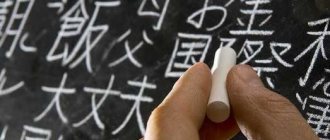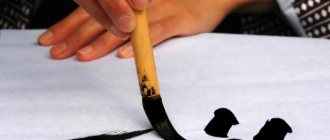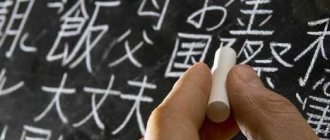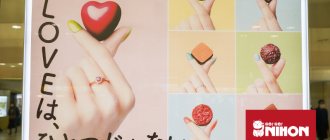Questions and answers about time are one of the most popular topics covered during language school. Learning to tell time correctly is very important, especially if a student is studying in Japan.
The Japanese equivalent of the word for "hours", such as "12 o'clock", is the suffix "ji". There is an exception to note: “4 o’clock” is pronounced “yoji” and not “yonji”.
Dates and times
Writing dates is similar to using counting suffixes, one each for year, month and day.
The year counter is very simple as it has no variations in reading. However, there are variations for months and a whole bunch of exceptions for days of the month. The two lists below list all the months in the year and the days in the month. Special readings or changes in reading are specifically highlighted.
Months
| Month | Kanji | Reading |
| What month | 何月 | なん・がつ |
| January | 一月 | いち・がつ |
| February | 二月 | に・がつ |
| March | 三月 | さん・がつ |
| April | 四月 | し・がつ |
| May | 五月 | ご・がつ |
| June | 六月 | ろく・がつ |
| July | 七月 | しち・がつ |
| August | 八月 | はち・がつ |
| September | 九月 | く・がつ |
| October | 十月 | じゅう・がつ |
| November | 十一月 | じゅう・いち・がつ |
| December | 十二月 | じゅう・に・がつ |
Days of the month
| Day | Kanji | Reading |
| What a day | 何日 | なん・にち |
| 1 | 一日 | ついたち |
| 2 | 二日 | ふつ・か |
| 3 | 三日 | みっ・か |
| 4 | 四日 | よっ・か |
| 5 | 五日 | いつ・か |
| 6 | 六日 | むい・か |
| 7 | 七日 | なの・か |
| 8 | 八日 | よう・か |
| 9 | 九日 | ここの・か |
| 10 | 十日 | とお・か |
| 11 | 十一日 | じゅう・いち・にち |
| 12 | 十二日 | じゅう・に・にち |
| 13 | 十三日 | じゅう・さん・にち |
| 14 | 十四日 | じゅう・よっ・か |
| 15 | 十五日 | じゅう・ご・にち |
| 16 | 十六日 | じゅう・ろく・にち |
| 17 | 十七日 | じゅう・しち・にち |
| 18 | 十八日 | じゅう・はち・にち |
| 19 | 十九日 | じゅう・く・にち |
| 20 | 二十日 | はつ・か |
| 21 | 二十一日 | に・じゅう・いち・にち |
| 22 | 二十二日 | に・じゅう・に・にち |
| 23 | 二十三日 | に・じゅう・さん・にち |
| 24 | 二十四日 | に・じゅう・よっ・か |
| 25 | 二十五日 | に・じゅう・ご・にち |
| 26 | 二十六日 | に・じゅう・ろく・にち |
| 27 | 二十七日 | に・じゅう・しち・にち |
| 28 | 二十八日 | に・じゅう・はち・にち |
| 29 | 二十九日 | に・じゅう・く・にち |
| 30 | 三十日 | さん・じゅう・にち |
| 31 | 三十一日 | さん・じゅう・いち・にち |
For completeness, all days of the week are listed here.
Numbers of the month and dates in Japanese
Today we will learn how to name the numbers of the month and dates in Japanese.
European chronology in Japan
Currently, chronology in Japan has two types: European and Japanese. The first thing to remember when writing a date in Japanese, but according to the European chronology, is that it is written in reverse order, that is, first the year, then the month and finally the day. You can also add the day of the week at the end.
Names of months and numbers in Japanese
Remembering the names of the months in Japanese is quite simple: just know the numerals from 1 to 12 and add the hieroglyph 月 gatsu (month) to them:
The most difficult part is to learn the atypical Japanese readings of numbers from 1 to 10, and then simply add the word nichi (日) to the numeral. But even here we need to pay attention to three exceptions, which include the 14th, 20th and 24th:
Also, the last day of the month can be called 晦日misoka (lit. “day of the end”), and December 31st 大晦日 ōmisoka (“day of the great end”).
If you do not yet know how to read Japanese, but would like to learn, then we advise you to master the Japanese alphabet - hiragana and katakana. It is, of course, better to start with hiragana. Take advantage of our free lessons to learn hiragana more effectively.
Japanese chronology
The Japanese chronology is a little more complicated than the European one. The fact is that the Japanese each time begin a new countdown from the accession of a new emperor to the throne. The current Emperor Akihito began his reign in 1989, that is, the current era, which is called Heisei, began in this year, and the first year of the reign is called 元年 - gan nen (the name of the first year of each era), and 1989 is called 平成元年- heisei gannen.
The current year 2015 is the 27th according to Japanese chronology, so December 20, 2015, which was taken as an example above, will be written as follows: 平成27年12月20日(Heisei nijūnana nen jūnigatsu hatsuka) or 平成27年十二月二十日 Below are the eras that belong to the 20th century:
明治時代 Meiji jidai - the reign of Emperor Meiji (1868-1912)大正時代 Taishō jidai - the reign of Emperor Taishō (1912-1926)昭和時代 Shōwa jidai - the reign of Emperor Showa (1926-1989)平成 Heisei - the reign of Emperor Akihito ( 1989-present)
If you take a Japanese coin in your hand, you will see that the issue date on it is written using the Japanese chronology. It is also often found in Japanese newspapers and official documents.
Try to learn a short dialogue related to dates (you can choose any date):
A:きょうは何月何日ですか。What is the date today? Kyō wa nani tsuki nan nichi desu ka B:5月21日です。Today is May 21st. Go-gatsu ni jyuu ichi nichi desu
Finally, do a short activity on writing dates.
In the comments, write the dates listed below and your birthday (or any other date important to you) in two ways, using the European and Japanese chronology:
February 25, 5 of the Showa era July 5, 1 of the Taisho era April 8, 22 of the Meiji era September 30, 8 of the Heisei era
Do you want to quickly learn how to read Japanese alphabet? We have a mini-course for you on learning hiragana in 5 lessons!
Source
Month names in Japanese
The good news right away is that unlike the names of the days of the week used in Japan, which can cause quite a headache for anyone just starting their adventure with Japanese, the names of the months are simple.
Japanese months are called: 1st month, 2nd month and so on until the 12th.
Simply put: in the modern Japanese calendar, which uses Western European chronology, the names of the months are just:
ordinal number + Japanese character for the word “month” -月.
Let's see what it looks like.
In this article, in addition to the Polivanov system, romaji is also used to transliterate Japanese words.
Basic numbers and counting system
Basic numbers and the counting system in Japanese are quite simple. Take a look at our table with Japanese numbers from 1 to 10, both for native Japanese, or wago
和語, and Chinese-Japanese, or
kango
漢語.
| Number | Kanji | Onny reading (Chinese) | Kun reading (Japanese) |
| 1 | 一 | iti (Ichi) いち | Hitotsu |
| 2 | 二 | ni (Ni)に | Futatsu |
| 3 | 三 | san (San) | Mitsu |
| 4 | 四 | si (Shi) し、yon (よん) | Yotsu よつ |
| 5 | 五 | go (Go)ご | itsutsu |
| 6 | 六 | Roku ろく | Mutsu |
| 7 | 七 | city (Shichi) しち、Nana なな | Nanatsu ななつ |
| 8 | 八 | hachi (Hachi) | Yatsu (Yattsu) |
| 9 | 九 | ku (Ku) く、Kyū きゅう | Kokonotsu |
| 10 | 十 | juu (Jū) じゅう | tou (Tō)とう |
A few points to note:
- For numbers from 1 to 10, you use only native Japanese (kun) readings. They do not require any counting words, so are themselves universal counting words
that can be used to count most items except people, money and time. - Chinese number reading always requires counting words. Since it is also used to read numbers greater than 10, it is used more often.
Month names in Japanese
As you can see, nothing complicated. Separately, I note that we indicated the names of the months using modern Arabic numerals. This spelling is used everywhere in advertisements, advertisements, on tickets, checks, on television and in newspapers.
In addition to modern writing, we can also find months written using traditional numeral hieroglyphs: 一月, 二月, 三月, 四月, 五月, 六月, 七月, 八月, 九月, 十月, 十一月, 十二月.
The exact same spelling of months is used in Modern Standard Chinese.
We may encounter such writing in situations where traditional writing is preferable (for example, to create an appropriate atmosphere): wedding invitation, onsen advertisement, invitation to a cultural festival, etc.
In addition, the use of traditional hieroglyphs for numerals is more common in vertical writing. Accordingly, the month of June, which is most often written like this:
when using vertical writing can be written as follows:
Numbers from 10 in Japanese
Japanese numbers after 10 are easy to remember; just learn the first ten. Each subsequent number is the result of adding 10 and the desired digit. So 11 is 10+1, in Japanese it looks like this:十i一 / じゅう + いち / ju:ichi
| Number | Hieroglyph | Hiragana (on sound) | Pronunciation (romaji) | Meaning |
| 11 | 十一 | じゅういち | ju: ichi | eleven |
| 12 | 十二 | じゅうに | ju:ni | twelve |
| 13 | 十三 | じゅうさん | ju: san | thirteen |
| 14 | 十四 | じゅうし じゅうよん | ju: shi ju: yon | fourteen |
| 15 | 十五 | じゅうご | ju: go | fifteen |
| 16 | 十六 | じゅうろく | ju: roku | sixteen |
| 17 | 十七 | じゅうしち じゅうなな | ju: shichi ju: nana | seventeen |
| 18 | 十八 | じゅうはち | ju:hachi | eighteen |
| 19 | 十九 | じゅうきゅう じゅうく | ju:kyu:ju:ku | nineteen |
| 20 | 二十 | にじゅう | ni ju: | twenty |
What do the names of the months mean in Japanese?
Modern month names, which began to be used in Japan with the introduction of the Western Gregorian calendar during the reforms of the Meiji era (1873), literally mean “ordinal number + month” and have no other hidden or mysterious meaning.
Japanese month names are constructed according to the following scheme:
For reference: the scheme may to some extent resemble the traditional Roman names of the months, which are used with some changes in Russian and English, i.e. November (November - 9th month), December (December - 10th month).
The only difference is that the modern Japanese calendar is relatively new and was created on the basis of the calendar already used in the West, to which we are all accustomed.
Numerals in Japanese
Abstract counting numbers from zero to ten
| Number | Hieroglyph | Hiragana (on sound) | Pronunciation (romaji) | Meaning |
| 零 | ゼロ、れい | zero, rei | zero | |
| 1 | 一 | いち | ichi | one |
| 2 | 二 | に | ni | two |
| 3 | 三 | さん | san | three |
| 4 | 四 | し、よん | shi、yon | four |
| 5 | 五 | ご | go | five |
| 6 | 六 | ろく | roku | six |
| 7 | 七 | しち、なな | shichi、nana | seven |
| 8 | 八 | はち | hachi | eight |
| 9 | 九 | く、きゅう | ku、kyu: | nine |
| 10 | 十 | じゅう | ju: | ten |
A children's video will help you, you will not only remember the pronunciation of numbers from 0 to 10, but also hear how the Japanese do it, since in some numbers (including in subsequent digits) the sound is reduced or lengthened. It's always useful to hear the pronunciation of a native speaker.
Month in date entry
Do not also forget that the month in Japanese date writing comes before the day , just as is customary in the North American tradition, as well as in the Chinese.
Accordingly, December 16 is written as 12月16日, that is, literally “12th month 6th day,” and not vice versa.
The entire date in modern Japanese is written in the following sequence: year + month + day.
For example, “November 17, 2021” would be written as:
2018年11月17日 (水)
Pay attention to the brackets - they are not required, but they often indicate the day of the week, the name of which is abbreviated to the 1st hieroglyph. In this particular case, 水 means an abbreviation of the word水曜日— Wednesday.
In an article devoted to Japanese days of the week, we talked about a number of nuances associated with recording Japanese dates.
Let’s consolidate what we’ve learned and take another example. Christmas Eve (according to the Gregorian calendar) will be written as: 2019年12月24日 (火) , and the character 火 in this case means火曜日—Tuesday.
We at Adisawi really hope that the information was useful and will help you during your stay in Japan. In the next article we will try to understand the unusual Japanese nengo eras. See you!
Source
Counting large numbers
Of course, you can count much larger numbers in Japanese. Here are some of our tips!
Counting to 100 is very easy if you understand how to form numbers - count tens by adding the desired number to them. For example: “11” is one 10 (juu) and 1 (ichi), that is, “juu-iti” “25” is two 10s (ni-juu) and 5 (go), that is, “ni- juu-go” “35” is three 10s (san-juu) and 5 (go), that is, “san-juu-go”, etc.
Continuing upward, you need to follow this pattern, except for numbers like 100 (百, hyaku hyaku
), 1000 (千, sen
sen
) and 10,000 (一万, ichiman
ichiman
), for which there are words.
For example, the number 5750 is made up of five 1000s, seven 100s and five 10s, resulting in "go-sen-nana-hyaku-go-juu".
It's important to note that for numbers from 10 to 1000, you don't say "ichi" if the number starts with 1. For example, 1500 is not "ichi-sen-go-hyaku", but simply "sen-go-hyaku". Likewise, 150 is pronounced "hyaku-go-juu" rather than "ichi-hyaku-go-juu".
For even larger numbers, such as 100,000 and 1,000,000, you need to look at how many “manas” they consist of. For example, if 10,000 is one “man” 万, then 100,000 is ten “man” 万 - “juu-man”.
One million is 100 "mana" 万, so in Japanese "million" becomes "hyaku-man".
Japanese numerals
Next, let's look at the list of Japanese numerals. There are only ten of them and they are preserved from the old Japanese language. Previously, one in Japanese sounded like “hi”, two - “fu”, three - “mi” and so on. Japanese numerals are used in certain cases, such as:
You can use the following hint: if the wordいくつ/ ikutsu / how much? is used in an interrogative sentence, then the answer must use numerals of Japanese origin. If the question consists of the Chinese (on) version of the reading 何 / なん、なに / nan, nani / question word - what?, how many, then the numbers given in the tables above are used.
Counting in Japanese - thousands
The principle of compiling numbers is the same as before, a thousand is added to the number, you just need to remember some features.
| Number | Hieroglyph | Hiragana (on sound) | Pronunciation (romaji) | Meaning |
| 1000 | 千 | せん | sen | thousand |
| 2000 | 二千 | にせん | nisen | two thousand |
| 3000 | 三千 | さんぜん | sandzen | three thousand |
| 4000 | 四千 | よんせん | yonsen | four thousand |
| 5000 | 五千 | ごせん | gosen | five thousand |
| 6000 | 六千 | ろくせん | rokusen | six thousand |
| 7000 | 七千 | ななせん | nanasen | seven thousand |
| 8000 | 八千 | はっせん | hassen | eight thousand |
| 9000 | 九百 | きゅうせん | kyu:sen | nine thousand |
| 10000 | 万 | まん | man | ten thousand |
The number 1094 in Japanese will look like this: 千九十四 / せんきゅうじゅうよん / sen kyu: ju: yon
Agree that the Japanese language is not so difficult that you refuse to study it, but it is very interesting and melodic that you decide to take a step towards understanding it. You will begin to think differently, learning any foreign language broadens your horizons, and the Japanese language is special in this regard, familiarity with grammar will help you better understand the mentality of the Japanese, different styles of speech will tell you about the versatility of relationships in Japanese society. Certified teacher, simultaneous interpreter Anna Reva and the online Japanese language school “Ikigai” will help you take an interesting path in learning the Japanese language.
Numbers in Japanese from 100
We learned above that 100 in Japanese is read as百/ひゃく/ hyaku. The hundreds place is formed by combining百with the digit we need. So the number 500 is the product of 5 and 100, that is, we take the number 5五/ご/ go and add百/ひゃく / hyaku =五百 /ごひゃく / gohyaku.
At the same time, in the category of hundreds, as well as in the category of thousands, new rules for stunning, voicing and doubling sounds appear; this must be remembered!
If you need to say one hundred, then there is also a change in pronunciation:一百 / いっぴゃく / ippyaku
| Number | Hieroglyph | Hiragana (on sound) | Pronunciation (romaji) | Meaning |
| 100 | 百 | ひゃく | hyaku | one hundred |
| 200 | 二百 | にひゃく | nihyaku | two hundred |
| 300 | 三百 | さんびゃく | sanbyaku | three hundred |
| 400 | 四百 | よんひゃく | yonhyaku | four hundred |
| 500 | 五百 | ごひゃく | gohyaku | five hundred |
| 600 | 六百 | ろっぴゃく | roppyaku | six hundred |
| 700 | 七百 | ななひゃく | nanahyaku | seven hundred |
| 800 | 八百 | はっぴゃく | happyaku | eight hundred |
| 900 | 九百 | きゅうひゃく | kyu:hyaku | nine hundred |
| 1000 | 千 | せん | sen | thousand |
The number 777 in Japanese will look like this: 七百七十七 / ななひゃくななじゅうなな /nanahyaku nanaju: nana









